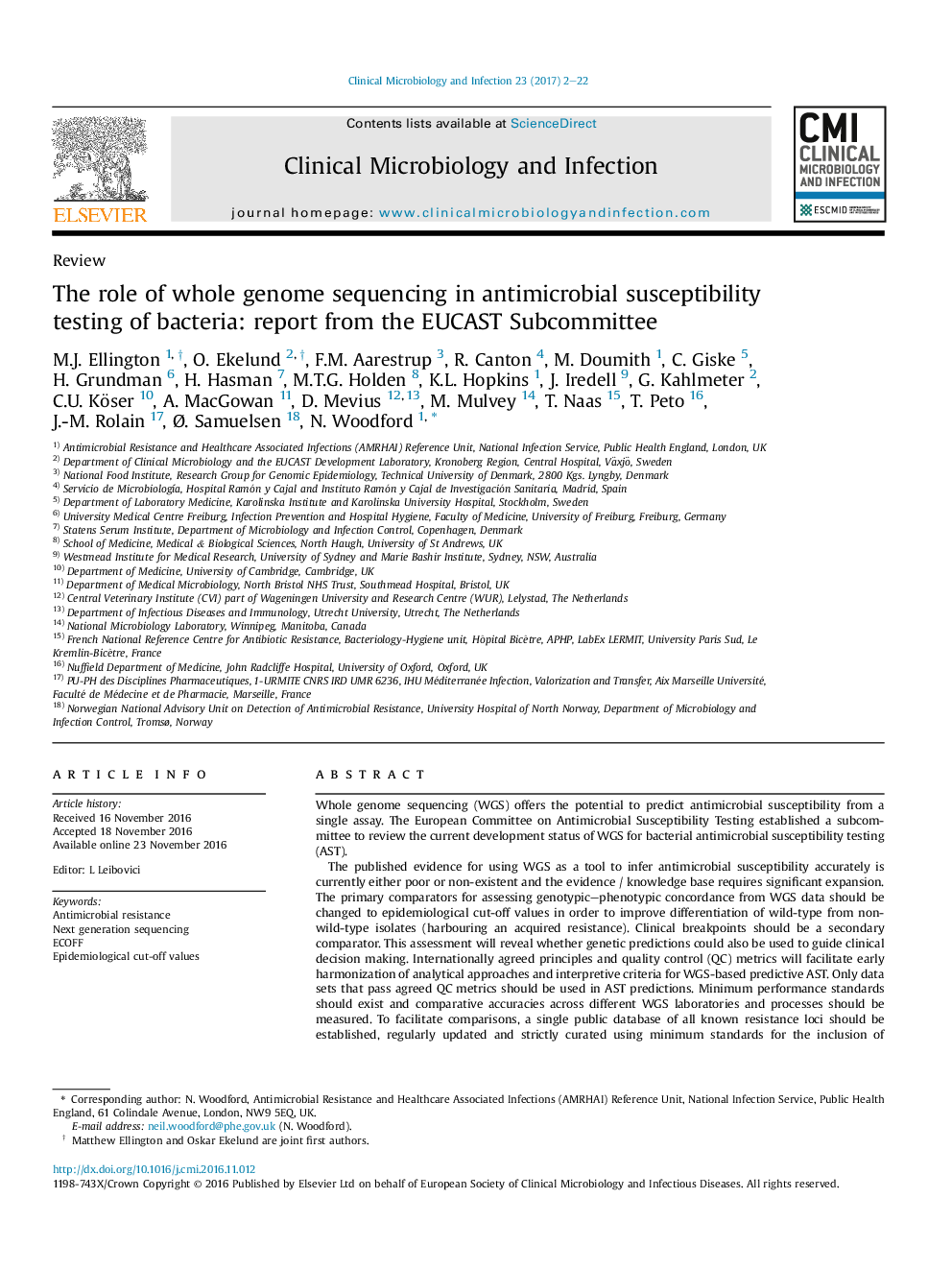| کد مقاله | کد نشریه | سال انتشار | مقاله انگلیسی | نسخه تمام متن |
|---|---|---|---|---|
| 5671474 | 1408056 | 2017 | 21 صفحه PDF | دانلود رایگان |

Whole genome sequencing (WGS) offers the potential to predict antimicrobial susceptibility from a single assay. The European Committee on Antimicrobial Susceptibility Testing established a subcommittee to review the current development status of WGS for bacterial antimicrobial susceptibility testing (AST).The published evidence for using WGS as a tool to infer antimicrobial susceptibility accurately is currently either poor or non-existent and the evidence / knowledge base requires significant expansion. The primary comparators for assessing genotypic-phenotypic concordance from WGS data should be changed to epidemiological cut-off values in order to improve differentiation of wild-type from non-wild-type isolates (harbouring an acquired resistance). Clinical breakpoints should be a secondary comparator. This assessment will reveal whether genetic predictions could also be used to guide clinical decision making. Internationally agreed principles and quality control (QC) metrics will facilitate early harmonization of analytical approaches and interpretive criteria for WGS-based predictive AST. Only data sets that pass agreed QC metrics should be used in AST predictions. Minimum performance standards should exist and comparative accuracies across different WGS laboratories and processes should be measured. To facilitate comparisons, a single public database of all known resistance loci should be established, regularly updated and strictly curated using minimum standards for the inclusion of resistance loci. For most bacterial species the major limitations to widespread adoption for WGS-based AST in clinical laboratories remain the current high-cost and limited speed of inferring antimicrobial susceptibility from WGS data as well as the dependency on previous culture because analysis directly on specimens remains challenging.For most bacterial species there is currently insufficient evidence to support the use of WGS-inferred AST to guide clinical decision making. WGS-AST should be a funding priority if it is to become a rival to phenotypic AST. This report will be updated as the available evidence increases.
Journal: Clinical Microbiology and Infection - Volume 23, Issue 1, January 2017, Pages 2-22